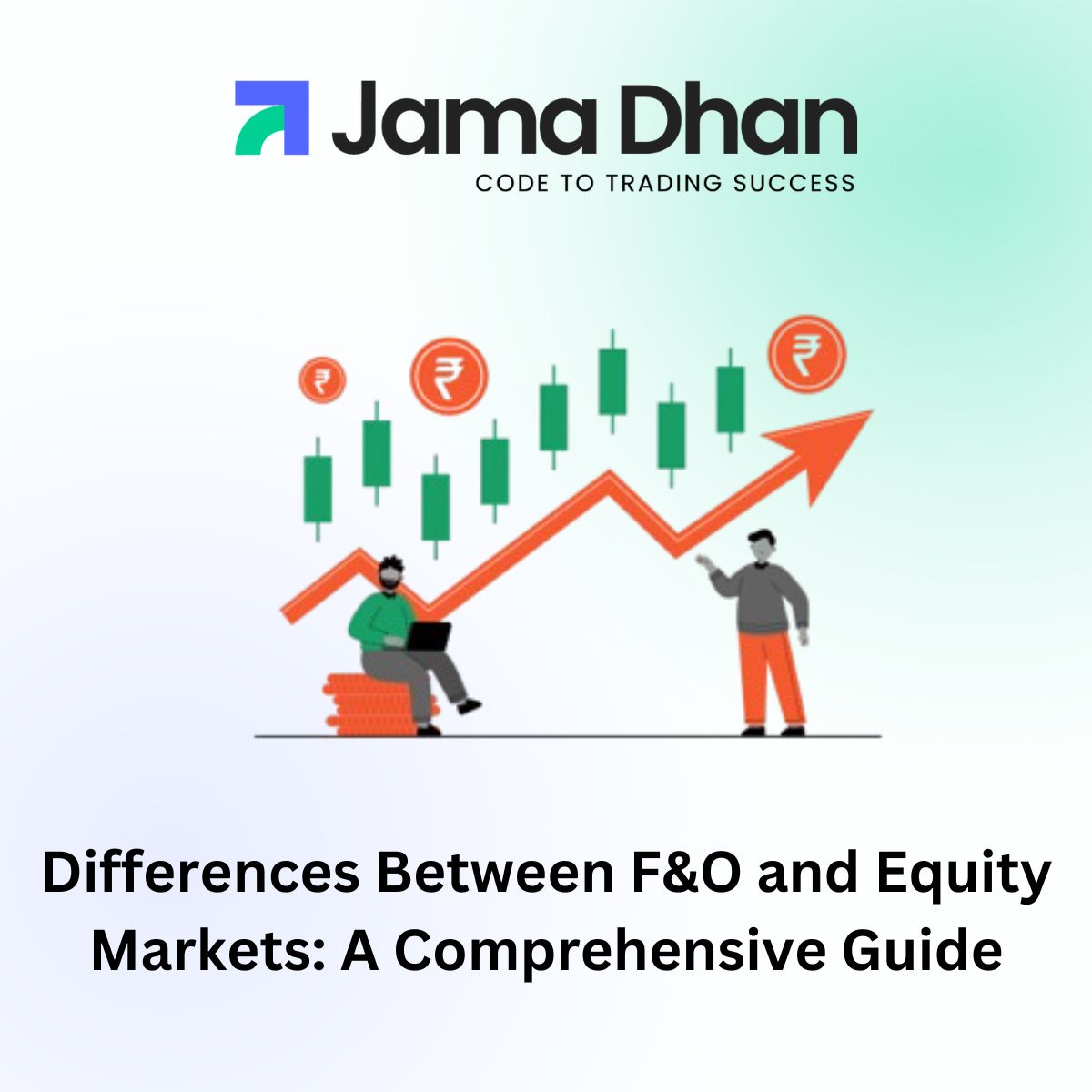Investors often encounter two popular segments in the stock market: Equity and Futures & Options (F&O). While both provide lucrative opportunities, they are fundamentally different in their structure, risk, and usage. Understanding these differences is crucial for making informed investment decisions. Let’s dive into the key distinctions between the Equity and F&O markets.
1. Definition
Equity Market: The equity market allows investors to buy and sell shares of companies, representing ownership in the business.
F&O Market: The F&O market deals with derivatives contracts where the value is derived from an underlying asset, such as stocks, indices, or commodities. It includes two types of contracts: Futures and Options.
2. Ownership vs. Contracts
Equity Market: When you buy a share in the equity market, you become a part-owner of the company. This gives you voting rights and the potential to earn dividends.
F&O Market: Buying or selling in the F&O market does not grant ownership. Instead, you’re trading contracts that bet on the future price of an asset.
3. Time Horizon
Equity Market: Investment in equities can be long-term, aimed at wealth creation over years or decades.
F&O Market: F&O contracts have a fixed expiry date, usually weekly, monthly, or quarterly, making them short-term instruments.
4. Risk Factor
Equity Market: Risk is moderate as the price of shares depends on company performance and market conditions. Losses are limited to the amount invested.
F&O Market: F&O trading is inherently riskier due to leverage. Losses can exceed your initial investment, especially if the market moves unfavorably.
5. Leverage
Equity Market: No leverage is involved; you pay the full price for shares upfront.
F&O Market: Leverage is a significant feature in F&O, allowing you to control a large position with a relatively small margin. While this amplifies profits, it also increases potential losses.
6. Purpose
Equity Market: Equities are primarily for investment and wealth creation. Investors look for appreciation in share value and dividends over time.
F&O Market: The F&O segment is predominantly used for speculation, hedging risks, or arbitrage. Traders aim to profit from price movements or protect their portfolios from adverse market conditions.
7. Settlement Mechanism
Equity Market: Settlement is straightforward, with shares credited to your demat account within T+2 days after a trade.
F&O Market: Settlement involves marking-to-market on a daily basis. On expiry, contracts are settled in cash or delivery, depending on the type of contract.
8. Capital Requirement
Equity Market: Requires a higher capital outlay as you need to pay the full value of shares.
F&O Market: Requires significantly less capital upfront due to the margin system. However, the potential for loss can exceed this margin.
9. Liquidity
Equity Market: Liquidity varies across stocks. Blue-chip stocks are highly liquid, while mid-cap and small-cap stocks may have limited liquidity.
F&O Market: Liquidity is generally higher, especially in popular indices like Nifty and Bank Nifty or stocks with active derivative contracts.
10. Regulatory Framework
Equity Market: Governed by SEBI, the equity market has stringent regulations aimed at protecting investors.
F&O Market: The F&O market is also regulated by SEBI but involves complex rules, especially regarding margins, leverage, and risk management.
Conclusion
Both the Equity and F&O markets cater to different types of investors and traders. Equities are ideal for those looking for long-term growth and stability, while the F&O market is suited for those with higher risk tolerance and a deep understanding of market dynamics.
Choosing between the two depends on your financial goals, risk appetite, and investment knowledge. Regardless of your choice, always conduct thorough research and consider seeking professional guidance to navigate these markets effectively.










